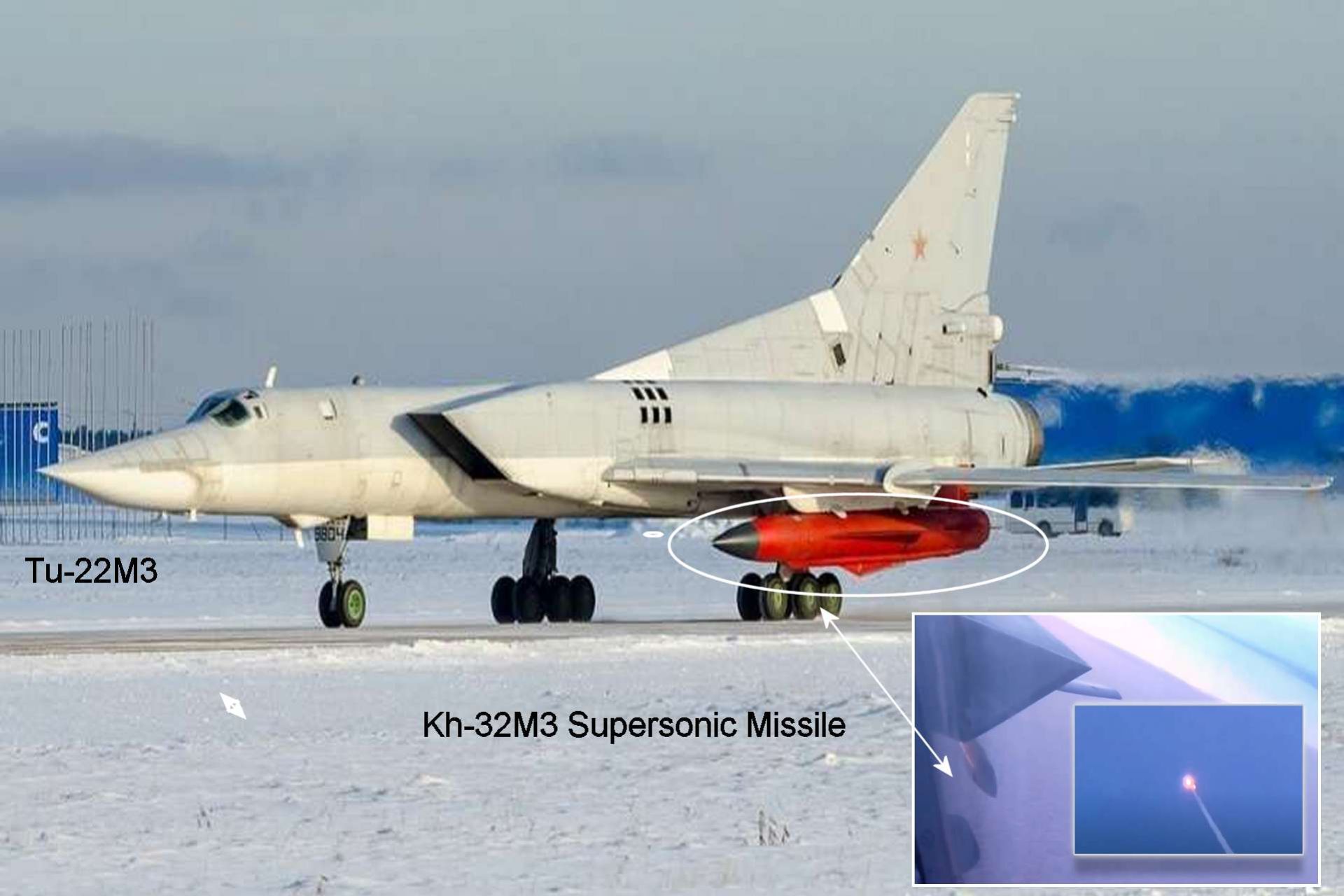Breaking news
Russian Tu-22M3 Bomber Launches Kh-32 Supersonic Cruise Missile against Ukraine.
On May 11, 2024, a video was posted on Telegram showing a Russian strategic bomber, the Tu-22M3, launching a Kh-32 supersonic air-launched cruise missile during an airstrike in Ukraine. Although the video is not dated, it clearly showcases the deployment of a Kh-32M missile, designed to target naval and ground targets.
Follow Army Recognition on Google News at this link

Russian Tu-22M3 Bomber Launches Kh-32 Supersonic Cruise Missile against Ukraine
(Picture source: Russian Social Media)
The Kh-32, developed by Russia, is an upgraded version of the Kh-22, a long-range anti-ship missile known under the NATO codename AS-4 "Kitchen". Originally designed during the Cold War, the Kh-22 can carry heavy conventional or nuclear payloads over distances of 600 to 700 kilometers. In comparison, the Kh-32, officially adopted in 2016, stands out for its ability to reach speeds up to Mach 5 and a range of over 1,000 kilometers, enabling it to strike targets well beyond enemy air defense systems.
The Kh-32 is armed to meet various mission needs due to its payload flexibility. It can be equipped with conventional payloads for anti-ship strikes or specialized anti-radiation payloads to neutralize enemy radar installations. Its supersonic speed and long range make it an effective choice against significant naval targets, including aircraft carriers. Its anti-radiation configuration also allows it to suppress air defenses by destroying radar installations.
The first operational use of Kh-32 missiles was observed during the Russian invasion of Ukraine in 2022. Concerns have been raised by the British Ministry of Defense regarding the use of these missiles, primarily designed for naval targets, against ground targets, warning of their lack of precision and the high risk of collateral damage. Notable incidents include the June 27, 2022, attack on a shopping center in Kremenchuk, which caused numerous casualties, and strikes on June 30, 2022, in Serhiivka, which also resulted in heavy losses.
Supersonic missiles, traveling at speeds ranging from Mach 1 to Mach 5 or more, possess several notable characteristics that make them particularly effective in modern conflicts. A relevant example is the Kh-32 missile, capable of reaching speeds up to Mach 5, approximately 6,200 km/h or 3,850 mph. This high speed not only allows for rapid coverage of large distances but also significantly increases their operational range, making these missiles capable of striking distant targets much more effectively than their subsonic counterparts.
Due to their speed, these missiles also have exceptional maneuverability, allowing them to perform complex maneuvers, thus making their interception by air defense systems much more difficult. The enormous kinetic energy accumulated at these supersonic speeds further enhances their impact power, allowing them to cause significant destruction even with relatively smaller explosive payloads. Typically employed in critical missions such as anti-ship attacks, anti-air engagements, and strategic strikes against ground targets, supersonic missiles are designed to maximize speed and stealth to minimize the chances of detection and interception before reaching their target.
From a purely technical standpoint, the Kh-32 is a supersonic air-launched cruise missile with a range of 600–1,000 km developed by MKB Raduga from the Kh-22. The missile was accepted into service in 2016 as armament for the Tupolev Tu-22M3M bombers. Compared to its predecessor, the Kh-22, the Kh-32 shares the same structural design and geometric dimensions. However, significant enhancements have been made to its capabilities. Firstly, the warhead weight has been reduced to 500 kg (1,100 lb), a modification aimed at extending its range.
The Kh-32 is equipped with a more powerful engine for increased performance. Additionally, it features an advanced guidance system that includes a radar inertial guidance system with radio command correction and terrain-based referencing via an altimeter. Instead of relying on autopilot, the missile employs an automatic control system.
One of the most noteworthy improvements is its maximum range, which extends up to 620 miles (997 kilometers). In terms of penetrating air defense systems, retired Russian Colonel Konstantin Sivkov believes that the Kh-32 possesses formidable capabilities. During its final stage, the Kh-32 employs a steep dive, which makes it difficult for missile defense systems like the Aegis Combat System, equipped with Standard Missile 6 missiles, to track and engage. Furthermore, the Kh-32's multi-frequency radar offers improved resistance to electronic warfare tactics such as spot jamming.


























